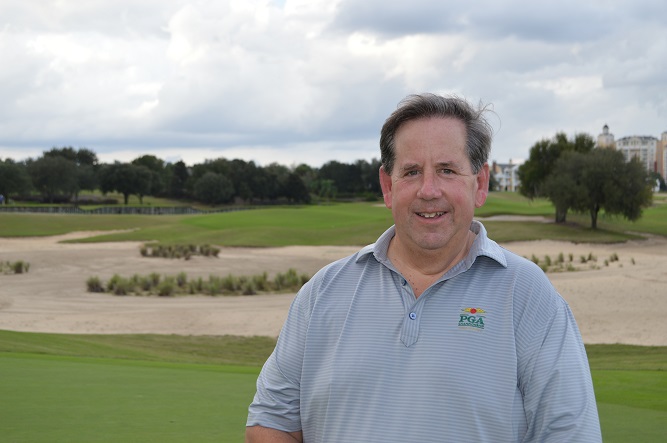Golfdom Files: Baltusrol welcomes PGA for the first time

Photo: Golfdom archives
Does a golf club named after a murder victim really have to do much to make itself any more interesting? Perhaps not, but that wasn’t going to stop Baltusrol Golf Club in Springfield, N.J., from making every effort to lure a major to the course. And it paid off when the PGA came a’calling. The following article was printed in the August 2005 issue of Golfdom and discusses the work done on the course prior to hosting the 2005 PGA Championship (it hosted the PGA Championship again in 2016). It appeared within a larger piece covering Mark Kuhns’ career revival upon accepting a superintendent position at Baltusrol.
Baltusrol welcomes PGA for the first time
One of the big problems with hosting a major is moving people in and out,” (Mark) Kuhns says. “And if you don’t have a second golf course or another 200 acres of land to work with, forget it. We’ve got 180 tractor-trailers that have to come in here (this summer) to deliver material. We’re literally building a city!”
Baltusrol has never hosted a PGA event. Kuhns, who hosted the 1994 U.S. Open as the certified superintendent at Oakmont (Pa.) Country Club, couldn’t be happier working with the PGA and its senior director of tournaments, Kerry Haigh, especially when it comes to game-day decisions the week of Aug. 8-14.
“That’s one nice thing about the PGA: They’re not really demanding a dried-out prune situation,” Kuhns says. “I asked Kerry, ‘When does your agronomist come on board to assist us with any problems or guide us with setup?’ He said, ‘Well, we really don’t have an agronomist, Mark. We don’t go to clubs where we need an agronomist.’ So there are no committees, no three or four people trying to decide where the pin should be or what the height of the rough is going to be.”
Kuhns predicts the PGA champion will shoot a 4-under-par. Mark Hughes, the former superintendent of the Lower Course, says the course will offer “immaculate conditions.”
“I know the greens will be firm and fast,” Hughes says. “And the rough will be extremely difficult for players to get out of.”
Under the guidance of Kuhns, Lower Course Superintendent Scott
Bosetti and architect Rees Jones, several notable changes have occurred since 1999:
- For the sake of added length and historical restoration, new tees were built on holes 3, 5, 8, 10, 11, 13, 14, 16, 17 and 18. Totaled, the par-70 Lower Course measures 7,400 yards and is the longest course among the four majors this year. In addition, it features the longest hole of the major season — the 647-yard 17th.“The 17th hole at one time was 630 yards and nobody had ever reached it in two until John Daly in the ‘93 Open,” Bosetti says. “So just in case someone wants to get a little itchy and wants to try to do that again, we lengthened it to 647. It’s a true three-shotter now.”
- All of the rough inside the ropes was replaced with more than 40 acres of sod comprised of approximately 80 percent Kentucky bluegrass and 20 percent perennial ryegrass. The fairways, tees and greens remain a mix of Poa annua and bentgrass.“There’s a big difference between solid bluegrass and the native junk, which is pretty much a hodgepodge of bent, Poa and ryegrass. It’s got a dark, deep color to it,” Bosetti says. “It doesn’t mind being mowed at low heights, and when it grows out it gets gnarly and thick. Every time someone hits it into the rough, it’s going to be a consistent lie. That was one of the things that we strived for.”
- A rough renovation tightened the fairways, in most cases to 24 yards to 30 yards in width. “It’s definitely a new look,” Kuhns says. “We’ve narrowed all the fairways to PGA specifications from 260 to 330 (yards) out from the back tee.”
Check out the full article here:











